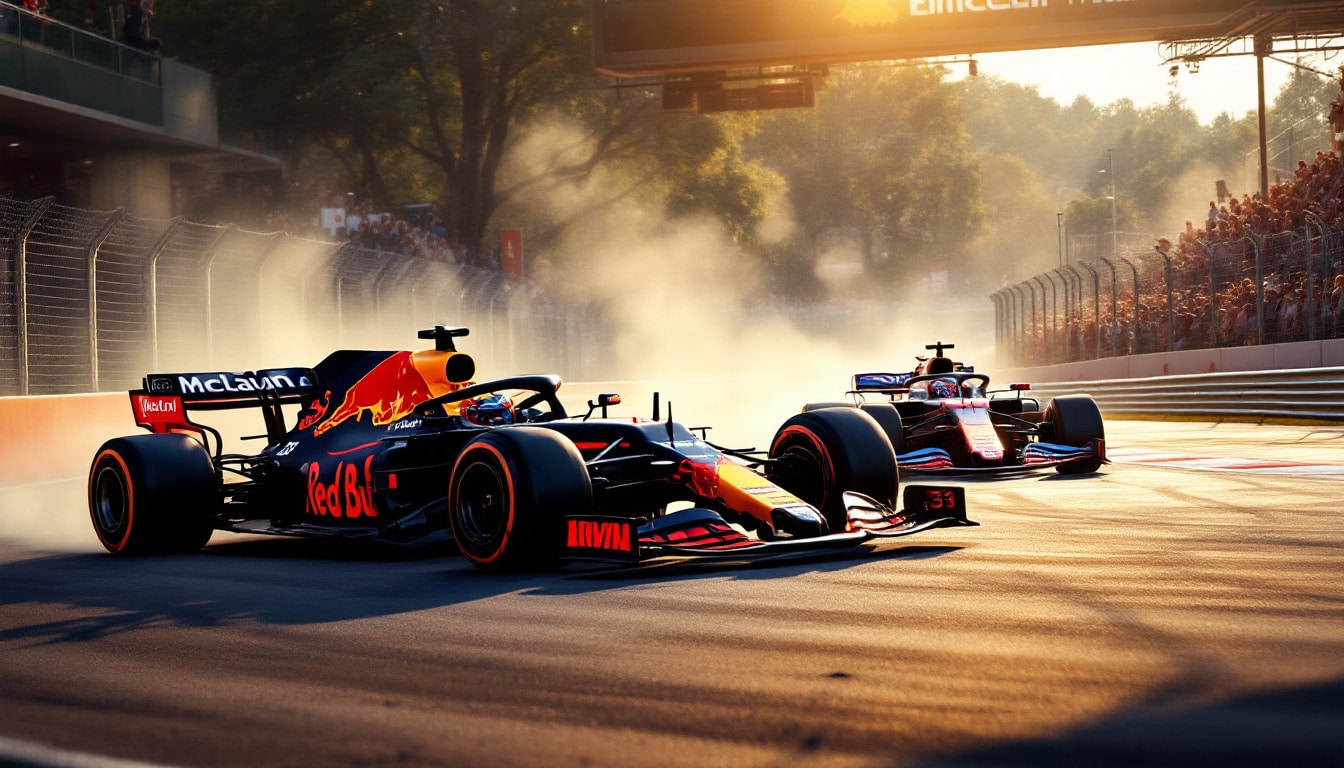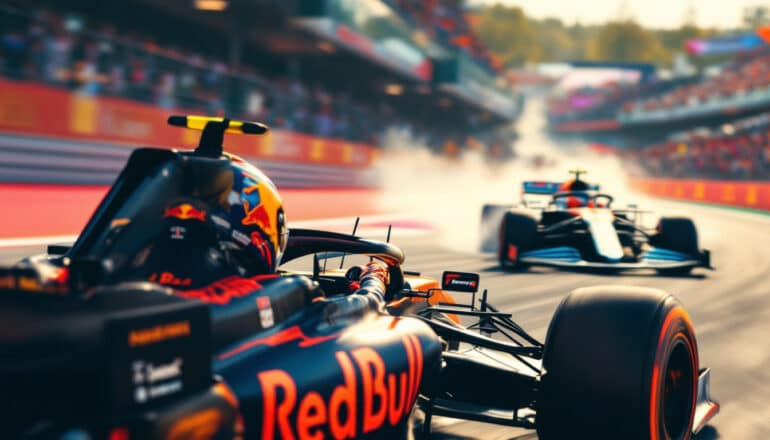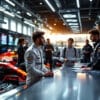The roar of engines and the fresh scent of rubber meeting asphalt set the stage for yet another thrilling chapter in the Formula 1 saga.
As the prestigious Miami GP unfolded, the spotlight firmly rested on McLaren, whose prowess in race conditions has become undeniable.
But the question on everyone’s lips revolves around Max Verstappen’s persistent ability to snatch pole positions, despite facing formidable competition.
The Miami Grand Prix once again brought McLaren’s supreme handling of rear tyre wear into sharper focus. Lando Norris and Oscar Piastri demonstrated their exceptional skills, clinching another 1-2 victory, marking McLaren’s fifth triumph in just six races. Meanwhile, Verstappen’s struggles loomed large, finishing an alarming 40 seconds behind. It’s clear: when the rubber starts to degrade, McLaren can pull away from the pack, showcasing their strength on the circuit. Yet, the battle for pole positions reveals a more intricate story. With Verstappen’s ability to outqualify both McLaren drivers, questions arise about the true speed of the papaya cars during qualifying. The ongoing rivalry is heating up, especially as the teams look toward upcoming championships with potential upgrades looming on the horizon.

In the world of Formula 1, the battle for pole position has always been a fierce competition, showcasing not only the speed of the cars but also the skill of the drivers. As the 2025 season unfolds, one narrative continues to resonate: Max Verstappen of Red Bull Racing regularly outpaces the drivers of McLaren, namely Lando Norris and Oscar Piastri, despite McLaren’s seeming superiority on race pace. Let’s delve into what allows Verstappen to maintain this edge over his competitors during qualifying.
What factors contribute to Verstappen’s pole position advantage?
Max Verstappen has demonstrated an uncanny ability to capitalize on given situations, particularly in qualifying. His remarkable talent lies not solely in the machinery he drives but also in understanding the nuances of the qualifying format. A significant aspect of his qualifying prowess is his ability to perform under pressure. When it matters most, Verstappen frequently rises to the occasion, exemplifying mastery that is characteristic of a world champion.
In tense moments of qualifying, the mental aspect becomes just as important as the physical speed of the car. Verstappen thrives on pressure, showcasing a knack for delivering flawless laps when it counts. Christian Horner, team principal at Red Bull, noted, “Time and again he has delivered, and that’s his third pole in six races now against expectations.” Such statements shed light on the belief within the Red Bull camp that Verstappen indeed possesses a unique capability to exploit high-stress moments.
In contrast, while the McLaren vehicles—particularly their MCL39 model—show exceptional speed, especially in race conditions, the qualifying performance has occasionally faltered. Piastri and Norris have struggled to consistently translate their car’s raw potential into effective lap times under qualifying pressure. The technical configuration of the MCL39 might not lend itself to optimum performance during one-off laps. Andrea Stella, McLaren’s team principal, highlighted this disparity, stating that the car can be easier to handle during continuous runs compared to single-lap efforts.
How does tire management play a role in qualifying performance?
The aspect of tire management is predominantly crucial in F1, especially when discussing qualifying sessions. It’s widely known that tire degradation and performance can severely impact lap times. With Pirelli tires being critical in balancing performance and management, Verstappen has showcased a better understanding of how to maximize tire grip during the qualifying format.
When analyzing McLaren’s performance, it’s evident that both Norris and Piastri have been unable to extract the same level of performance when it comes to managing the tires on short runs. Tire temperature and degradation play a vital role in securing pole position. Verstappen’s ability to handle a single lap while keeping the tires in their optimal operating window contributes significantly to his consistent pole successes.
Moreover, the competition for tire allocation and usage during qualifying rounds has become another tactical game among teams. McLaren’s challenges with tire wear have been accentuated when pressures are high, leading to less predictable performance on those decisive qualifying laps. Highlighting these difficulties, Stella explained, “The car’s ‘numb’ front axle isn’t giving the drivers the necessary information about what to expect,” which further complicates tire management strategies.
What role does driver experience impact qualifying results?
One distinctive element in Verstappen’s favor is his depth of experience. As a seasoned driver, he is well-acquainted with the psychological and strategic elements of qualifying. Experience can lead to an essential used understanding of racecraft, track evolution, and environmental changes, which can significantly influence lap time.
While Norris and Piastri are immensely talented and show promise, they are still relatively young in terms of F1 experience compared to Verstappen, who has been in the sport for several years and is well-versed in how to harness the car’s potential across various circuits. This background empowers him to adapt quickly to changing conditions, an attribute often reflected in qualifying sessions.
Verstappen navigates complexity adeptly, frequently employing different lines and setups tailored explicitly for qualifying, thus enhancing his already formidable speed. For McLaren, the ongoing challenge is to develop the collective experience necessary to propel both drivers into contention for pole positions consistently. As new drivers are introduced, it takes time for them to build this essential race experience contributing to overall performance.
Can technological advancements help McLaren level the playing field?
The current technological advancements in F1 are crucial for performance. McLaren has proven their capacity to innovate, yet the team continues to fine-tune their car to be more competitive in qualifying scenarios. Exploring the potential upgrades and optimizations, especially regarding aerodynamics and setup adjustments, could lead to a more reliable qualifying performance.
The most immediate focus for McLaren as the 2025 season progresses will involve addressing the technical challenges that have led to inconsistencies in qualifying. By investing in research and development, they hope to enhance the overall balance and predictability of the MCL39, allowing drivers like Norris and Piastri to extract maximum speed during their qualifying runs.
For instance, adjusting the vehicle’s aerodynamic balance could enable the drivers to maintain better control, leading to a significant reduction in errors during qualifying. As technology continues to advance, the teams that can harness these changes will secure their foothold at the front of the grid.
In the race for pole positions, it’s clear that both Red Bull and McLaren are taking divergent paths. As noted by recent reports, Verstappen’s standout performances against a backdrop of tire management, driver experience, and the ability to handle pressure set him apart. Ultimately, the development path the McLaren team embarks upon could determine whether they can challenge Red Bull’s advantage in future qualifiers.
As progress continues, the expectations from both fans and pundits alike will remain high to see if McLaren can bridge the gap and create competitive tension against Verstappen in the exhilarating world of Formula 1.


